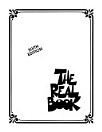Jazz Guitar Lines
About this ebook
The following is a list of most of the jazz scales the student will encounter as he becomes involved in the study of improvising. When we improvise, we use as our weapons the scale, harmony and melody. The two dimensions in music are the harmony (vertical) and melody (horizontal).
It is highly recommended that every student of improvising, know his scales in all positions and a variety of chords that the scales generate. All scales should be played in at least four positions especially the 1st position forces one to learn the theory. All other position pattern scales must be transposed throughout the guitar.
The author has written a few pages in the beginning of the book serving as a prerequisite for the jazz lines to follow. It is essential that the student know the scales, key signatures, intervals, and chord constructions that will be used throughout the book.
In order to benefit fully from this approach to jazz, the student must understand the full meaning of the words practice and analysis. Most students confuse practice with playing or reading through the exercise. To really improve and absorb the material, every phase must be practiced. This means the fingering must be committed to memory, slowly at first and then as fast as technique allows. The idea must be so ingrained in the mind that it flows from any part of the fingerboard that the performer desires. This is the way great players approach an idea – from any fret, string or position!
If there is no harmonic or melodic analysis of the material being studied, then the learning skill becomes superfluous and there is no comprehension and absorption, and without this proper digestion the performer cannot use it as his taste dictates.
All of the great players, have had a great technique and this is the first goal of the young student – “great chops.” As the student matures, musicianship will grow but technique is at the grasp of all who seek it. Start today to acquire it!
About the author
Vincent Bredice M. M. - Now an associate professor and guitar instructor at Miami-Dade Junior College, Miami, Florida, has taught guitar privately since 1946 from Maine to Florida. He has also taught at the Philadelphia Academy of Music and the Hartt College of Music of the University of Hartford where he was awarded a Master's degree in theory and taught theory and guitar for ten years. He has played on radio, T. V., and night clubs, and recorded for Columbia Records. In the field of composition, he has written works for guitar, piano, woodwinds, and strings. His "Sonata for Tre", a 12-tone piece for guitar, flute, and viola won one of the 2 top honors in the International Competition for Guitarists held annually in Modena, Italy. In the field of education he has written along with The Complete Method of Improvising, seven other published guitar books, two bass guitar books, and The Contemporary Modal Improvisation Book co-authored with Tom Floyd. He is also co authoring two books with the renowned jazz guitarist Jack Wilkins.





